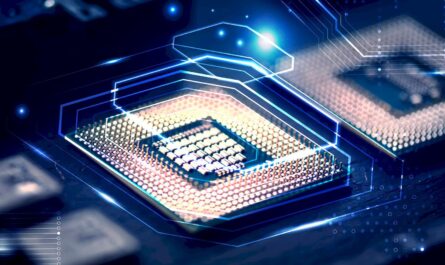A reed switch is a basic electromagnetic device used to control electric circuits. It is a basic electrical component used in many applications to make or break an electrical contact. In this article, we will explore what exactly a reed switch is, how it works, its main components and applications.
What is a Reed Switch?
It consists of a hermetically sealedcontacts encapsulated in a glass tube which is filled with inert gas like argon. These contacts are separated slightly from each other and are attached to flexible metal reeds. When there is no magnetic field present near the switch, the reeds are slightly apart and the switch is considered open.
Main Components of a Reed Switch
A standard reed switch consists of three main components:
– Glass Tube: The reeds and contacts are housed in a sealed glass tube which protects them from external environment and contaminants. This glass tube is usually very small, around few millimeters in diameter.
– Magnetic Field Sensitive Contacts: These contacts are generally made up of precious metals like gold, platinum or palladium. They are very sensitive to magnetic fields.
– Flexible Metal Reed: Two pieces of thin, flexible magnetic metal usually beryllium copper alloy are used to make electrical connection with the internal contacts. These reeds are flexible and move towards or away from each other based on external magnetic field.
When no external magnetic field is present, the reeds are slightly bent away from each other keeping the contacts separated, maintaining the open or off state. The presence of magnet brings the reeds together, closing the contacts and turning the switch on.
Working Principle of Reed Switch
The working principle of a Reed Switch Device is based on simple magnetism. When a magnet, either permanent or electromagnet, is brought close to the reed switch and the magnetic field becomes strong enough, it pulls the flexible metal reeds of the switch together. This closing action forces the magneticfield-sensitive contacts mounted on the reeds to touch, thus closing the electrical circuit.
When the magnetic field weakens or disappears, say when the magnet is moved away, the elasticity of the flexible reeds causes them to spring apart and separate the contacts, breaking the electrical circuit. Even a weak magnetic field can cause this switching action reliably millions of times before they fail.
Reed Switch Applications
Given its simple working mechanism and high reliability, reed switches are used in various applications:
– Security Systems: Magnetic reed switches are used extensively in home security systems, door/window sensors, motion detectors etc. They detect presence or absence of a magnetic field.
– Appliance Controls: Used for controls in appliances like ovens, washing machines, air conditioners etc to trigger certain operations.
– Measurement Instruments: Found in flow meters, level meters, counters etc to keep track of parameters being measured.
– Computers & Electronics: Used in hard disk drives, printers, scanners as starting/stopping switches, over-current protection etc.
– Industrial Automation: As limit switches, emergency stops, valve position indicators in factories and processing plants.
– Medical Equipment: In respiratory devices, heart lung machines, defibrillators to handle operations and signal processes.
– Automotive: In fuel level sensors, gear position indicators, ignition components of cars and heavy vehicles.
Reed Switch Features and Benefits
Some key features and benefits of using reed switches are:
– Hermetically Sealed Construction: Glass encapsulation provides excellent protection from dust, liquid penetration and contaminants.
– High Reliability: Lifespan of over 10 million operations and resistance to shock and vibration make them highly durable.
– Compact Size: Typically only a few millimeters in size, they occupy very small space.
– Responsive: Switching occurs within microseconds on activation of magnetic field.
– Non-volatile: Maintains on/off state even when power is removed.
– Low Power Operation: Require very small magnetic activation, so energy efficient.
– Versatile: Can handle wide range of currents up to few amps based on design.
– Cost Effective: Provided low unit costs given simple construction.
Reed switches are very basic electromagnetic devices that provide reliable on/off switching for a wide variety of applications due to their compact size, responsiveness, durability and low cost. Given their advantages, reed switches will continue to remain relevant across many industries.
Reed Switch Variations
Over the years, reed switch technology has evolved with different variations available to suit diverse application needs:
– Form A Switch: Basic SPST normally open type. Circuit is open with no magnetic field.
– Form B Switch: SPDT type, with center off position. Connects either terminals with field.
– Form C Switch: SPST normally closed type. Circuit is closed with no magnetic field.
– Multi Pole Switches: More than one circuit in single switch like DPDT, 3PDT etc.
– Sensitivity Variations: Low, medium, high versions for weak to strong magnetic fields.
– Sealed/Unsealed Types: Completely sealed or with exposed contacts/terminals.
– Micro Switches: Sub-millimeter switches for miniature applications.
– Solid State Alternatives: Opto-reed, Hall effect devices provide isolation without contacts.
So in summary, various reed switch designs are available based on required switching action, environmental needs and operating field intensity. Product selection depends on specific application parameters.
A reed switch is a simple yet robust device that provides reliable on/off switching using the basic principles of magnetism. Though a basic component, it caters to a wide variety of applications due to compact size, fast switching, long operating life and ease of operation. Evolution of different variations allows their use in varied environments and conditions. Their attractive features and low-cost makes reed switches retain relevance for a long time to come across industries.
Note:
1. Source: Coherent Market Insights, Public sources, Desk research
2. We have leveraged AI tools to mine information and compile it




